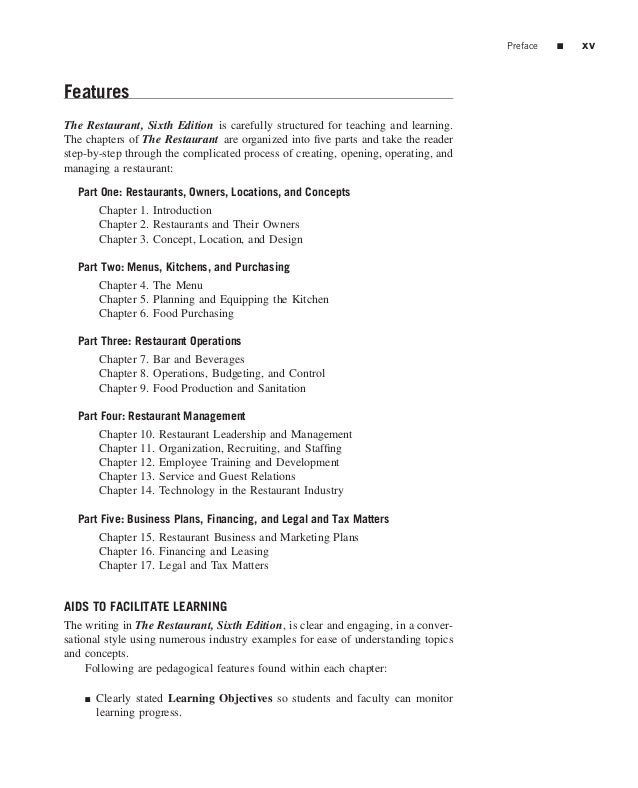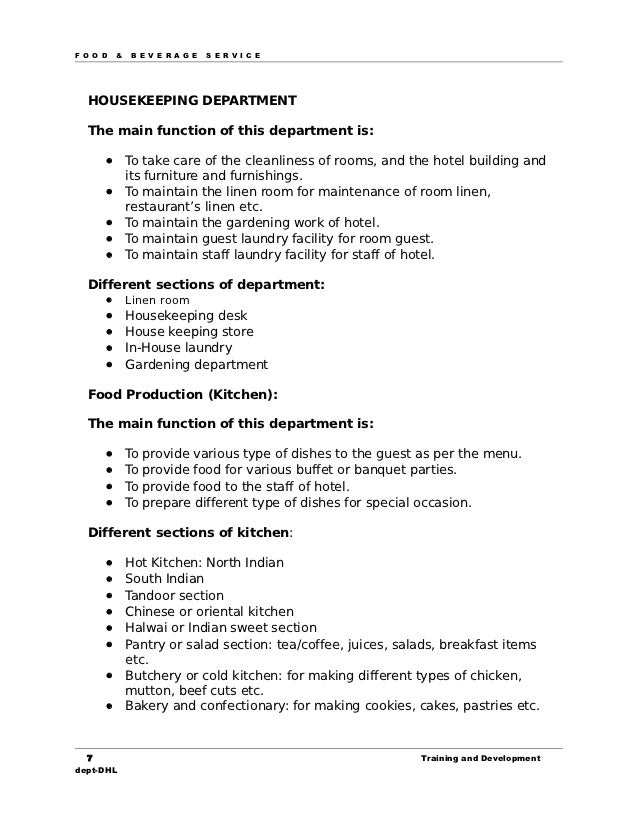How To Create A Kitchen Training Manual
Posted By admin On 25.09.19
- How To Create A Kitchen Training Manual In Word 2007
- How To Create A Kitchen Training Manual In Microsoft Word
Creating and circulating an employee manual can be a good idea whether your restaurant is new or you've been in operation for a while. A good restaurant employee manual will outline your expectations for job performance from your employees, as well as job descriptions, safety procedures, and any other communications you want to convey. Where should your employees take their grievances, if any? What's your policy for chronic tardiness? If there's ever a dispute with an employee about policies, rules, or behavior, you can pull out your handy employee manual for the correct answer. A server policy: What are your standard dining room procedures, including those for opening and closing? What side work are servers responsible for?
What is the cash policy? Do servers keep a bank? Will they pool tips?.
A bartender policy: This should outline the basics of the liquor standard pours, inventory, and understanding the different types of alcohol, beer, and wine that will be served. The bartender policy should also touch on opening and closing duties, how to, and how to guard against serving minors.
Writing your employee handbook is critical when opening a new restaurant. It dictates your workers’ behavior and lets them know how the company operates internally. Your employees' understanding of the handbook ensures they know how to properly conduct themselves at work, saves management from answering the same questions over and over again, and legally protects the restaurant if there is a dispute over restaurant policies. With such an important document, it can be daunting when sitting down to write the handbook. You should always consult an employment attorney before you finalize and start handing out your handbook to ensure all legal information is correct for your specific area. Things to keep in mind Employee handbooks are for everyone.
Every single person who works for your restaurant is responsible for knowing the information in your handbook, so everyone needs to be able to read it. This means writing laws and policies in plain language and may mean providing multilingual versions, depending on your area and type of restaurant. These documents are not going to be read cover-to-cover.
May 28, 2005 - Line Cook Training Manual. Depends upon creating and retaining a staff capable of delivering an exceptional dining experience to every. Kitchen (Event Kitchen Manager) prior to making the reservation. Using the kitchen follows the food safety and sanitation standards described in this Manual.
When an employee wants to know something, they will reference that section. Avery e1105 service manual. This means that the information should be as easy to find as possible. Incorporating a table of contents, charts, images, and maps is a great way to make information more accessible.
Everything is subject to change. This document will constantly be updated as laws and restaurant policies change. It’s imperative that your employee handbook keep up with the latest information in order to keep all employees well-informed. Keeping different sections separated in a three-ring binder makes it easy for new pages to replace outdated or damaged ones.
How To Create A Kitchen Training Manual In Word 2007
Keep it in plain sight. As questions come up, it’s important for employees to recognize the handbook as a source of information.
In addition to giving everyone a copy when they’re hired, it’s a good idea to keep a copy in the kitchen, break room, or other common area where your employees meet. Keeping it in the open encourages everyone to view the employee handbook as a resource that can be consulted when there is a question. Handbooks are important but not alone. Employee handbooks are undoubtedly very important documents, but they can’t include everything employees need to know. The most important information should be included, and the handbook should also tell the reader where they can find more specific sources of information. Having regular trainings, an appendix, or another book of reference material is a sure way to guarantee your staff has access to all the information they need.
Sections of the Handbook Introduction/Welcome Letter: Many employee handbooks start with a letter to welcome the new staff member and introduce them to the philosophy of the company. This is a good place to put your mission statement and important values and beliefs.
Having this in the handbook lets employees know what is important to the company. Disclaimer/Acknowledgement: Having employees sign and turn in a legal document stating they read and understand the handbook is important for ensuring they know its contents. You should mention any anti-nepotism policies you may have to ensure fairness in hiring and promotion. With this should also be the statement that you are an Equal Opportunity Employer and will not discriminate based on factors like race, gender, sexual orientation, age, disability, national origin, genetic information, or religion in compliance with the, and any other applicable labor laws. Make sure readers know the handbook is in no way an employment contract. Some locations have specific laws about how this information needs to be displayed. Check your local and state employment laws or ask an employment attorney for more information.
Work Hours / Payroll: This section should cover everything dealing with payment and hours. This can mean any of the following:.
Payroll. Scheduling. Break.
Calling off. Worker’s Compensation Benefits: Explain any of the perks employees get for working at your restaurant. Insurance/401K - Though insurance isn’t common in the foodservice industry, you should still explain what types of insurance (medical, dental, etc.) are available for employees, if any. Time off – Explain what vacation, holidays, sick days, bereavement, maternity leave, and paid time off are available. Meal Policy – It’s common for restaurants to give employees a free or discounted meal during their shift. Outline what meal employees receive, if applicable.
Discipline: No manager wants to have to punish an employee, but sometimes measures need to be taken. Having a system in place for disciplinary action protects employees from unfair treatment and keeps management safe from unjust claims of punishment. Many businesses use a point system, with transgressions corresponding to points and points earning different disciplinary actions.

Appearance: Here is where you should outline exactly what is and isn’t appropriate attire for work. This includes piercings, tattoos, nails, hair, facial hair, dress code/uniform, and shoes. It’s a good idea to include pictures of what is appropriate and inappropriate so there’s no confusion for your employees. Behavior: Apart from actions associated with their job duties, your employees need to know how to act when they are at work.
Letting employees know what they can and can’t do and what the consequences are for those actions is necessary for any business to run properly. This section should cover:. Attendance. Shift swapping. Technology / Cell Phone Policy Communication standards: Lack of communication will lead to friction and problems in the workplace.
To preempt this, emphasize openness and honesty from day one if an employee has an issue. Also, explain who to talk to if they need to talk to someone about a specific problem. Communication should be an expectation and employees should feel free to discuss any issues they may have without fear of repercussion. Cash Handling Policies: Cash is a common way of paying both tips and full bills in restaurants.
Having procedures in place for how employees should handle the money will cut down on theft, loss, and carelessness. Some things you could consider:. Tip reporting /. Harassment: Harassment comes in many forms and can happen in any environment. Having a clear and definitive harassment policy makes for a safe work environment for all employees. Be sure to include definitions and laws surrounding harassment, as well as what to do if someone feels they are being harassed.
How To Create A Kitchen Training Manual In Microsoft Word
Drugs and Alcohol: Substance abuse can be dangerous to anyone: staff and customers alike. Make sure your policy is clear about what employees can and cannot do. This is especially important in bars and restaurants that serve alcohol. Health and Safety: To keep your staff and customers safe, include a section on how best to handle health-related situations (someone fainting, an open wound, etc.). Longer materials that go into specific procedures should be made available and visible around your facility. You should also hold regular safety meetings in addition to initial training, so your employees can stay up to date on important safety topics.
Emergency Procedures: In the case of a theft, fire, natural disaster, or other emergency, have set safety procedures in place. Preparation is crucial in such situations and your employees need to know what to do in case the unthinkable happens. This information should be posted in multiple places around the facility in addition to the handbook. The Leading Distributor of Restaurant Supplies and Equipment Based in Lancaster, PA, WebstaurantStore is the largest online restaurant supply store serving food service professionals and individual customers worldwide. With thousands of available products and over 5.5 million orders shipped, we have everything your business needs to function at its best.
Over the years we have expanded our selection of wholesale supplies and commercial equipment to include healthcare, educational, and hotel supplies. Our focus is your convenience – order online from your laptop, desktop, or smartphone 24 hours a day, 7 days a week. Our fast shipping, low prices, and outstanding customer service make WebstaurantStore the best choice to meet all of your professional and food service supply needs.